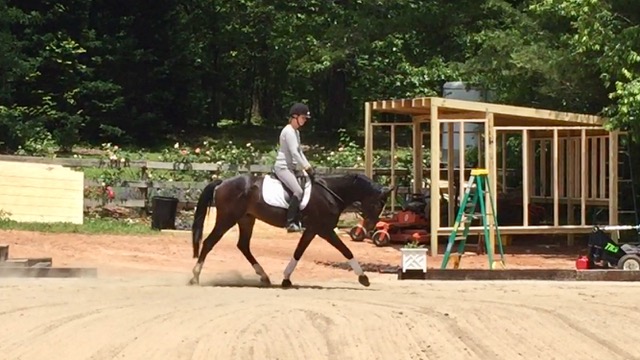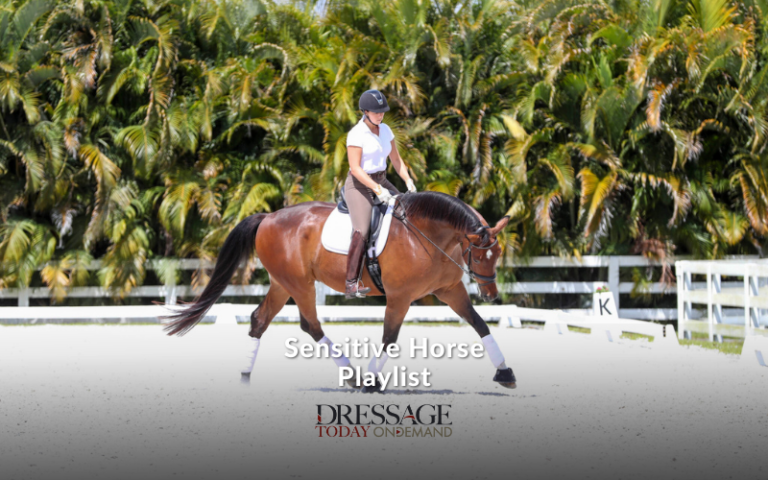With Lucas’ 4th birthday just days behind him, our rides will now increase to four times a week (no longer than 30 minutes, including 15 minutes of walk), with one of those days being a hack day. He’s proven to be a steady-eddie when we leave the arena for our walk in the field after our sessions, and this leaves me feeling pretty comfortable in his sensibility.
Really, on babies, I believe the main thing is just getting them happy and consistent within the connection in all three gaits, but with Lucas, I felt we were lacking in the looseness department. When you ride a horse with a big, honkin,’ uphill neck (ask anyone with a Friesian or Lusitano), it can look very impressive from the ground, but only the rider knows if they truly have the back or not, and it’s worthless to try to ride a horse ‘poll up’ if the back is dropped. And because a horse will always offer you the best trot it can give after a balanced canter, I have gone to his canter much earlier in his warm up in order to gain access to his back, rather than trot round and round, waiting for him to really “let go.”
Once we’re in the canter, I begin riding short little bursts of forward and back. The canter is Lucas’ signature gait, he loves it and finds these quick transitions intriguing. My aim is for there to be a complete lack of tension within them. I don’t want his neck or jaw tightening as we go forward and I don’t want his back freezing when I bring him back. I just want him softly attuned to my seat. So to prevent any of that I periodically throw in a big circle and ask him to stretch while maintaining the same tempo. What’s really cool is that when I ride him back up, the amount of lift he offers me, organically, is just delicious, and everything feels butter soft.
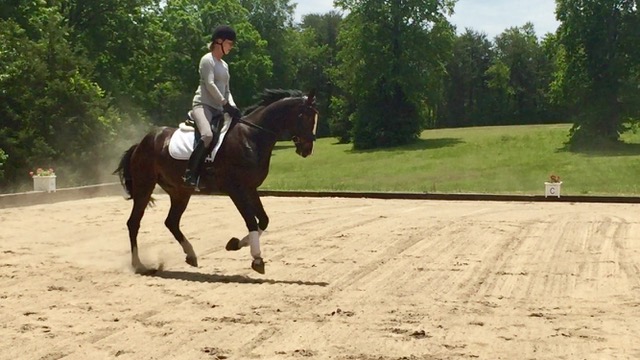

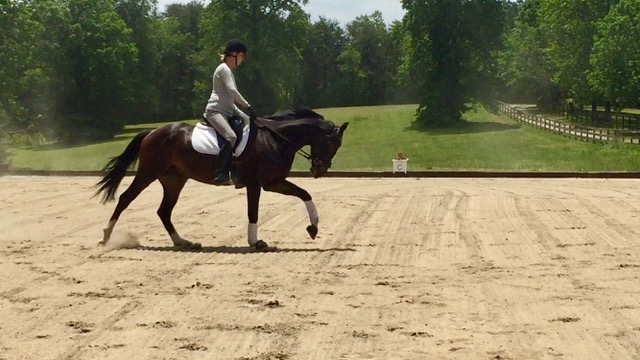
Lucas has always had a big, uphill canter—it’s why I chose him to be my dance partner, but now the quality within that canter, thanks to the relaxation of his back and the strengthening that is occurring from the transitions, has really improved.
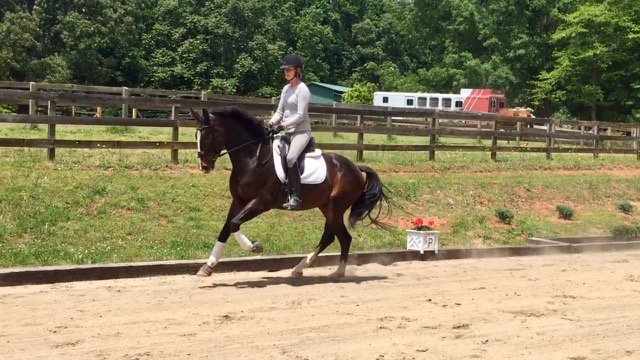
Bonus! When we then land in trot, we get the same looseness. And extra props to the birthday boy for not batting an eye at the construction site for the tractor shed, including the aluminum ladder which would have had my dear retired off-the-track Thoroughbred, Forrest, airlifted with a nervous breakdown.
